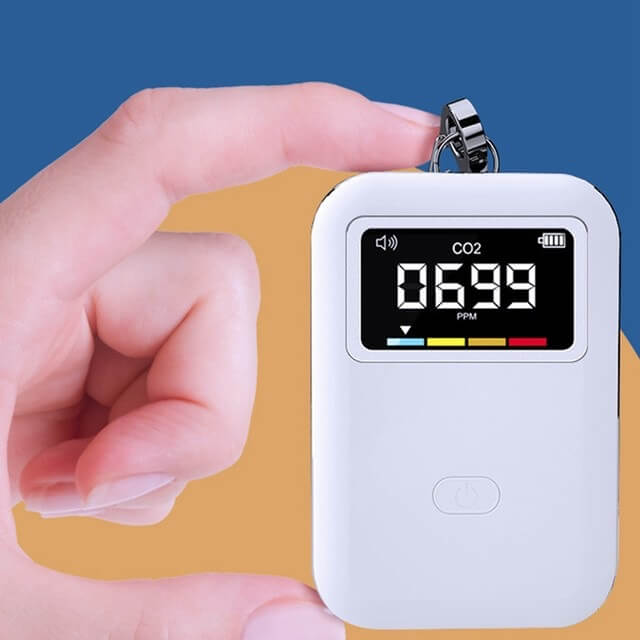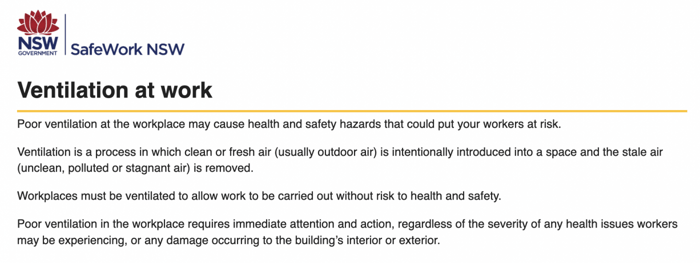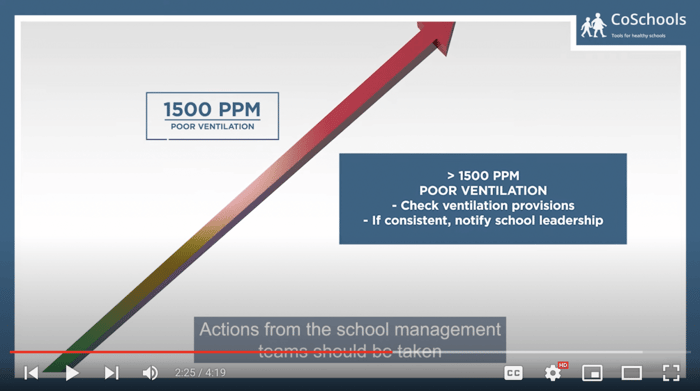
Work Health and Safety Guidelines regarding CO2 Levels
Work Health and Safety Guidelines regarding indoor carbon dioxide levels.
The Australian Health Protection Principal Committee (AHPPC) advises that improved ventilation may limit the spread of certain respiratory diseases, such as COVID-19 in indoor environments.
A consistent indoor air concentration of less than 800 parts per million (ppm) CO2 is likely to indicate that a space is well ventilated.
When CO2 concentration measurements average between 800-1500ppm over the occupied period this is an indicator to take action to improve indoor ventilation. An average of 1500ppm CO2 concentration over the occupied period in a space is likely an indicator of poor ventilation. You should particularly take action to improve ventilation where CO2 readings are consistently higher than 1500ppm.
To read the complete document click on the link below:
For those looking for a high quality and very portable mini CO2 monitor to assess their own workplace click on the image below:
hy is fresh air good for you?
Affects from a lack of fresh air, are caused by a lack of oxygen to the brain causing fatigue and drowsiness.
Benefits of healthy air
makes you happier.strengthens your immune systems good for your digestive systemeduces airborne illnesses and infectionsincreases your energy and sharpens your mindhelps you sleep better at night
How can we assess the freshness of indoor air?
One simple and effective tool for measuring indoor air quality is to assess the carbon dioxide (CO2 levels).
Outdoor air has a CO2 level of roughly 400 to 450parts per million (ppm).
Animals breath out CO2. Generally the more people in a relatively enclosed air space tge higher the CO2 level.
most jurisdictions accept up to a maximum of 800ppm for ‘safe’ indoor air.
At levels of 1500ppm our ability to concentrate decreases by 50%.
What can we do when we’re in an indoor environment with high CO2 levels?
articulates or airborne pathogens (eg viruses) are a concern then wear a respirator (eg well fitted N95 mask)
For more information on the benefits of fresh air please read this link:
Why is fresh air good for you?
Affects from a lack of fresh air, are caused by a lack of oxygen to the brain causing fatigue and drowsiness.
Benefits of healthy air
makes you happier.strengthens your immune systems good for your digestive systemeduces airborne illnesses and infectionsincreases your energy and sharpens your mindhelps you sleep better at night
How can we assess the freshness of indoor air?
One simple and effective tool for measuring indoor air quality is to assess the carbon dioxide (CO2 levels).
Outdoor air has a CO2 level of roughly 400 to 450parts per million (ppm).
Animals breath out CO2. Generally the more people in a relatively enclosed air space tge higher the CO2 level.
most jurisdictions accept up to a maximum of 800ppm for ‘safe’ indoor air.
At levels of 1500ppm our ability to concentrate decreases by 50%.
safety safety safety
What can we do when we’re in an indoor environment with high CO2 levels?
particulates or airborne pathogens (eg viruses) are a concern then wear a respirator (eg well fitted N95 mask)
For more information on the benefits of fresh air please read this link:





